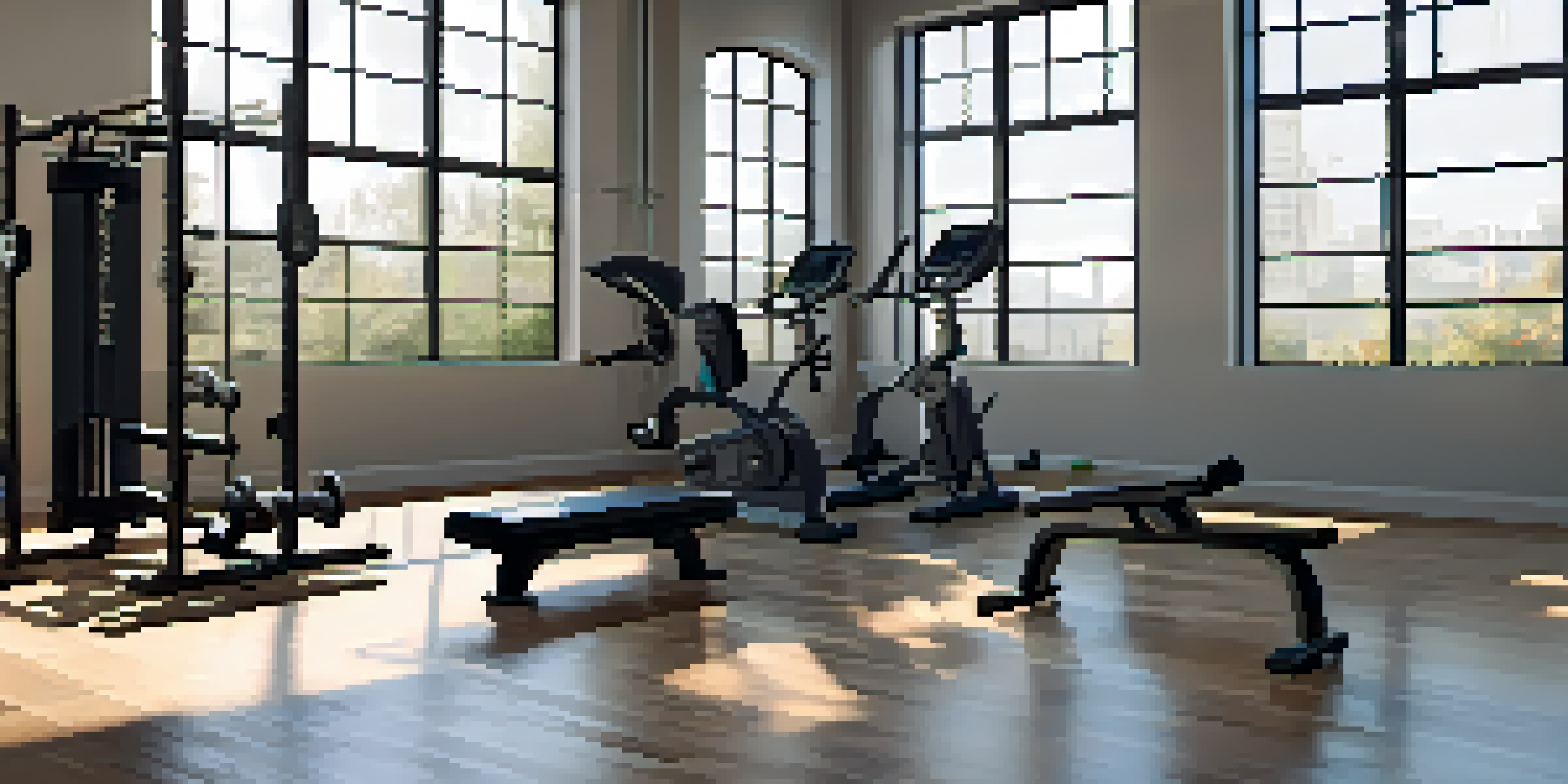How to Choose the Right Workout Split for Bodybuilding Success

Understanding Workout Splits and Their Importance
A workout split is simply how you divide your training sessions to target different muscle groups. Choosing the right split is crucial for bodybuilding success because it helps ensure balanced development and adequate recovery. Think of it like a recipe; the right ingredients in the right amounts lead to a delicious meal.
The only bad workout is the one that didn’t happen.
For example, a common split is the 'push-pull-legs' routine, where you work on pushing muscles one day, pulling muscles another, and legs on a separate day. This allows specific muscle groups to rest while others are trained, enhancing your overall performance. By understanding the concept of workout splits, you set the foundation for a successful bodybuilding journey.
Ultimately, the goal is to maximize your training efficiency and results while minimizing the risk of injury. So, let’s dive deeper into how to choose the right split that aligns with your fitness goals and lifestyle.
Identifying Your Fitness Goals: Bulking vs. Cutting
Before selecting a workout split, it's essential to clarify your fitness goals. Are you looking to bulk up and gain muscle mass, or are you more focused on cutting fat while maintaining muscle? Understanding whether you're in a bulking or cutting phase will directly influence your workout strategy.

For instance, during a bulking phase, you might benefit from a split that emphasizes heavy lifting and higher volume to promote muscle growth. On the other hand, if you're cutting, a routine that combines strength training with more cardio might be beneficial to enhance fat loss while preserving muscle.
Choose the Right Workout Split
Selecting an appropriate workout split is vital for targeting muscle groups effectively and ensuring balanced development.
By identifying your goals upfront, you can tailor your workout split to support your specific needs, making your training more effective and aligned with your aspirations.
Assessing Your Training Experience and Skill Level
Your training experience plays a significant role in determining the best workout split for you. Beginners may find full-body workouts or upper/lower splits more effective, as they allow for adequate recovery while developing a solid foundation. Meanwhile, advanced lifters might benefit from more specialized splits, such as body part splits, to target muscle groups intensively.
Strength does not come from physical capacity. It comes from an indomitable will.
For example, a novice might start with a three-day full-body routine, allowing them to learn proper techniques and build strength across all muscle groups. In contrast, an experienced bodybuilder could use a five-day split, focusing on individual muscle groups each day, like chest on Monday and back on Tuesday.
Ultimately, your skill level should guide your split choice, ensuring it matches your current capabilities and pushes you towards growth without causing burnout.
Time Commitment: How Much Can You Train Each Week?
Consider your weekly schedule when selecting a workout split. Time commitment varies from person to person, and it's crucial to choose a routine that fits into your lifestyle. If you have limited time, a full-body workout three times a week might be more feasible than a five-day split.
Additionally, if you're someone who enjoys spending more time at the gym, you might prefer a more complex split that allows for extra workouts, focusing on specific muscle groups. For instance, a push-pull-legs split can be adapted to fit into a six-day routine for those who thrive on frequent training.
Align Goals with Training Style
Understanding whether you're bulking or cutting will help tailor your workout split to support your specific fitness objectives.
By being realistic about your available time, you can create a sustainable workout plan that keeps you motivated and consistent in your bodybuilding journey.
Recovery: The Key to Muscle Growth and Performance
Recovery is an often-overlooked aspect of bodybuilding, yet it’s critical for muscle growth and overall performance. When you train a specific muscle group, you're breaking down muscle fibers, and they need time to repair and grow stronger. A well-structured workout split will incorporate rest days and recovery strategies to optimize your results.
For example, if you're following a push-pull-legs split, ensure that you’re not overworking any muscle group by allowing 48 hours of rest before targeting the same area again. This not only prevents injury but also promotes better muscle adaptation and strength gains.
Prioritizing recovery in your workout split will ultimately lead to improved performance and help you avoid the dreaded plateau that many bodybuilders face.
Incorporating Variety: Keeping Your Workouts Fresh
Variety is the spice of life, and it applies to your workout split as well. Sticking to the same routine can lead to boredom and diminished results over time. Incorporating different exercises, rep ranges, and training techniques can keep your workouts exciting and challenging.
For instance, if you've been following a traditional body part split, consider switching to a full-body workout for a few weeks. This change can stimulate different muscle fibers and enhance overall growth. You can also mix in supersets, drop sets, or circuit training to keep your routine dynamic.
Prioritize Recovery for Growth
Incorporating adequate recovery in your routine is essential for muscle repair and preventing injury, ultimately enhancing performance.
By introducing variety into your split, you not only maintain your enthusiasm for training but also push your body to adapt and grow, enhancing your bodybuilding success.
Evaluating Your Progress and Making Adjustments
Finally, it's essential to regularly evaluate your progress and be open to adjusting your workout split as needed. Bodybuilding is a journey, and what works for you now may not be as effective in a few months. Keep track of your lifts, body measurements, and overall performance to identify areas for improvement.
For example, if you notice that you're consistently plateauing, it might be time to switch up your split or increase the intensity of your workouts. Alternatively, if you're feeling fatigued, you may need to incorporate more rest days or reduce your training volume.

By staying attuned to your body's responses and being flexible with your workout split, you can ensure continuous progress and ultimately achieve your bodybuilding goals.